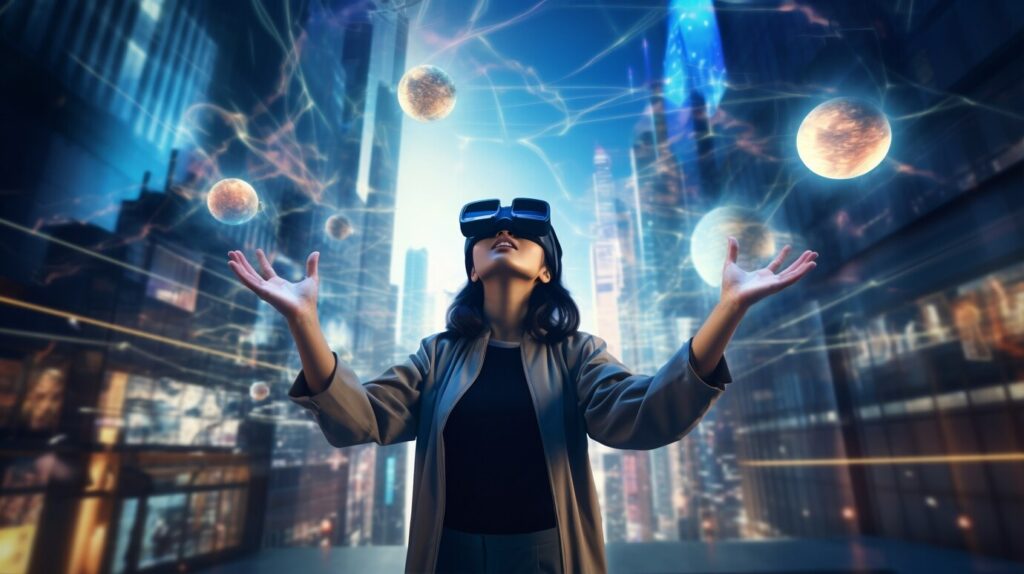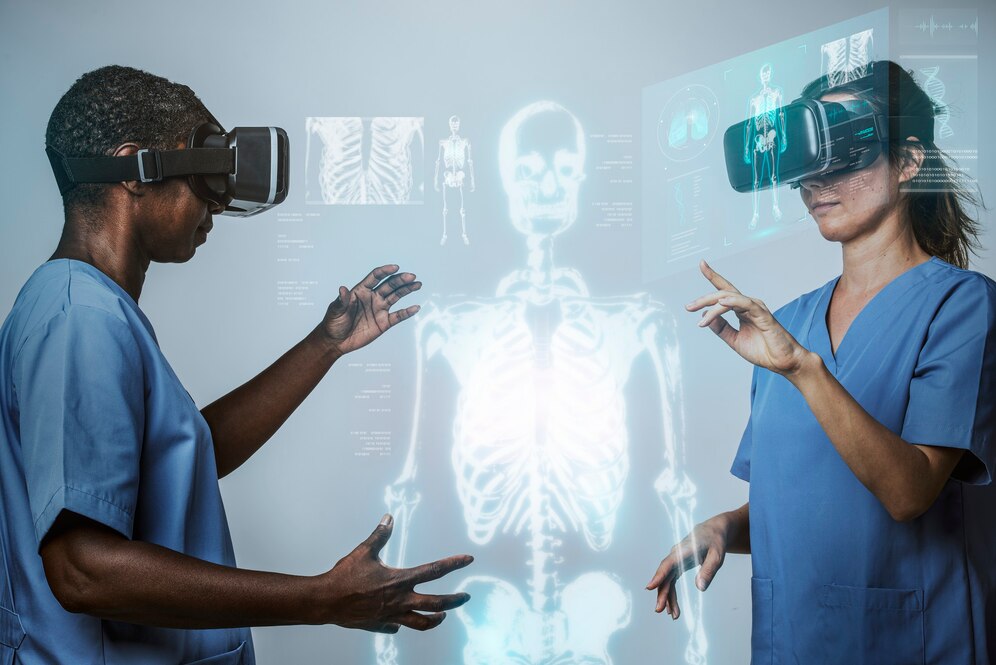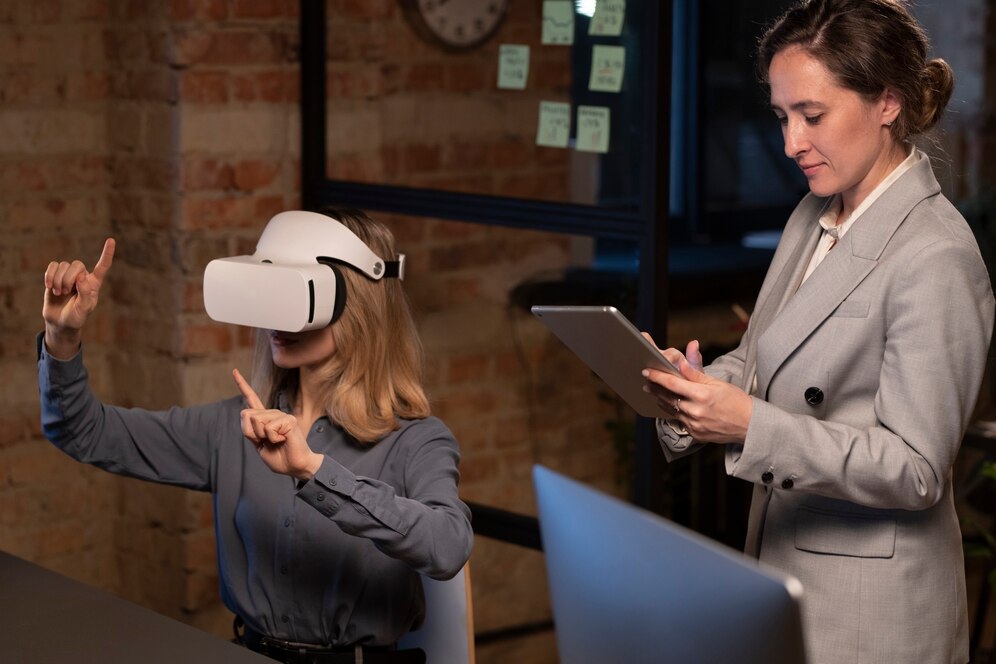Table of Contents
Big tech’s investment in AR and VR is revolutionizing how we interact with the world around us. These technologies are changing everything, from how we shop to how we socialize, work, and learn. Major companies like Meta, Apple, and Google are pouring billions into AR (Augmented Reality) and VR (Virtual Reality) to bring futuristic digital experiences to life. With these investments, we’re getting closer to a world where the physical and digital blend seamlessly.
As big tech dives deeper into AR and VR, we are seeing a dramatic shift in how these technologies are used in daily life. While some companies focus on gaming or entertainment, others are exploring business solutions, education, and even healthcare. Big tech’s investment in AR and VR is not just about creating new gadgets; it’s about building immersive environments that can transform entire industries.
Big Tech’s Investment in AR and VR: A New Digital Reality
Big tech’s investment in AR and VR is opening doors to a new kind of digital reality. Companies like Meta, Apple, and Google are working hard to bring these technologies to life. These investments are not just about creating new gadgets; they’re about building the future. With AR, the world around us will be enhanced with digital information. VR, on the other hand, is about creating entirely new digital worlds for us to explore.
As the technology improves, we will see more ways to use AR and VR in daily life. From shopping to entertainment, the possibilities are endless. Big tech companies are pushing for a future where these digital realities are as normal as using a smartphone. This is just the beginning, and we can expect even bigger changes in the next few years.
By making these technologies available to more people, big tech is changing how we interact with the world. Imagine walking down the street and seeing information about the places around you through your glasses. Or sitting at home and visiting a museum virtually. That’s the potential of AR and VR, and big tech’s investment is making it all possible.
How Big Tech’s Investment in AR and VR Is Shaping Our Future

Big tech’s investment in AR and VR is not only changing technology but also shaping our future. These tools have the power to change how we live, work, and learn. As companies continue to pour money into AR and VR, the next generation of digital experiences is being built. We are moving towards a world where we won’t just see digital content on a screen but experience it as part of our environment.
These advancements are bringing people closer together in new ways. For example, AR can allow us to have virtual meetings that feel just like being in the same room. VR can help us train for complex tasks or travel to faraway places from the comfort of our homes. Big tech’s investment ensures that these technologies will keep improving and become more accessible.
In the coming years, big tech companies will likely introduce even more practical uses for AR and VR. Imagine being able to try on clothes virtually or visit a new city without leaving your house. These are just some examples of how the future is being shaped by these technologies.
The Race for AR and VR: What Big Tech’s Investment Means for Consumers
Big tech’s investment in AR and VR means consumers will soon have access to powerful new tools. The competition among companies like Meta, Snap, Apple, and Google is driving innovation. With each company releasing new products and features, consumers will see better and more affordable options in the market. This investment is pushing the industry forward and making AR and VR more accessible for everyday use.
- More Affordable Devices: As competition increases, prices for AR and VR devices will drop, making it easier for consumers to own these technologies.
- Improved User Experience: With big tech’s constant innovation, the user experience of AR and VR will improve. Expect devices to become lighter, more comfortable, and easier to use.
- New Features and Applications: Consumers will benefit from the new features that companies develop. From gaming to learning tools, these technologies will soon be everywhere.
The race between big tech companies means faster progress, and consumers will be the winners. Whether it’s a new VR headset or an AR app for smartphones, there’s something exciting to look forward to.
How Big Tech’s Investment in AR and VR Will Revolutionize Healthcare

Big tech’s investment in AR and VR is expected to make a huge impact on healthcare. Doctors and medical professionals are already using these technologies to train and treat patients. AR can help surgeons by providing real-time information during operations, while VR can allow doctors to practice complex procedures in a risk-free environment.
- Surgical Training: Surgeons can practice on virtual models to improve their skills before performing real surgeries.
- Patient Treatment: VR can be used to help patients with physical rehabilitation, guiding them through exercises in a virtual world.
- Medical Education: AR can bring educational materials to life, allowing medical students to interact with 3D models of the human body.
These advancements are just the beginning. With more investment, healthcare will become more efficient, and patients will have access to better care. Big tech is paving the way for a healthier, more technologically advanced future.
Big Tech’s Investment in AR and VR: The Future of Work and Remote Collaboration
Big tech’s investment in AR and VR is also transforming the way we work. With more people working from home, these technologies are helping bridge the gap between remote and in-office work. AR can bring real-time data to workers, and VR can create virtual offices where teams can collaborate from different parts of the world.
How AR and VR Are Changing Remote Work:
- Virtual Offices: VR can create digital meeting rooms where people can collaborate, just like being in the same office.
- Interactive Presentations: AR can display important data during a meeting, helping employees make better decisions.
- Remote Assistance: AR can help employees troubleshoot problems remotely, providing visual guides and instructions.
As big tech continues to invest in these areas, the way we work will continue to evolve. AR and VR will allow for more flexible and productive work environments, making collaboration easier and more effective.
Big Tech’s Investment in AR and VR: Key Players and Innovations You Should Know

The main companies driving big tech’s investment in AR and VR are Meta, Apple, Google, and Snap. These companies are introducing groundbreaking innovations that are changing the tech landscape. They are leading the charge in creating new devices and software that bring AR and VR to the masses.
Key Players in the AR and VR Space:
- Meta: Known for its Oculus VR headsets, Meta is expanding into AR with its Ray-Ban partnership, making smart glasses more accessible.
- Apple: Apple’s ARKit platform is enabling developers to create immersive experiences for iPhones and iPads. Their future AR glasses could take the tech to the next level.
- Google: Google’s ARCore is making it easier to develop AR applications, and they continue to push the envelope with innovations like Google Glass.
- Snap: Snap’s Spectacles are leading the way in wearable AR devices, offering new ways for users to interact with the world.
With all these players working hard on innovations, the AR and VR space is evolving quickly. The future looks exciting, with more accessible devices and cutting-edge experiences for everyone.
Conclusion
Big tech’s investment in AR and VR is making the future of technology look very exciting. These technologies are changing the way we live, work, and play. With companies like Meta, Apple, and Google leading the way, we can expect even more amazing things to come. From virtual offices to improved healthcare, AR and VR will soon be part of our everyday lives.
As big tech continues to invest and improve these technologies, it’s clear that we’re heading toward a digital world where the boundaries between the physical and virtual disappear. The future is bright for AR and VR, and we’ll likely see even more innovative ways to use them in the years ahead. Stay tuned, because the best is yet to come!
FAQs
Q: What is the difference between AR and VR?
A: AR (Augmented Reality) overlays digital information onto the real world, while VR (Virtual Reality) creates a completely digital environment for users to interact with.
Q: How is big tech investing in AR and VR?
A: Big tech companies like Meta, Apple, and Google are investing billions in developing AR and VR technologies, creating new devices, and improving software to make these experiences more accessible.
Q: How will AR and VR impact healthcare?
A: AR and VR are being used to train doctors, assist in surgeries, and help with patient rehabilitation, making healthcare more efficient and effective.
Q: Can I use AR and VR for entertainment?
A: Yes! AR and VR are already used in gaming, movies, and interactive experiences, allowing users to explore new worlds and enjoy immersive entertainment.
Q: Are AR glasses available for consumers?
A: Yes, companies like Meta have partnered with Ray-Ban to create AR glasses, and other companies like Apple are working on similar products for future release.
Q: Will AR and VR change the way we work?
A: Absolutely! AR and VR will allow for virtual offices, interactive meetings, and more flexible ways to collaborate remotely, changing the way people work and communicate.


